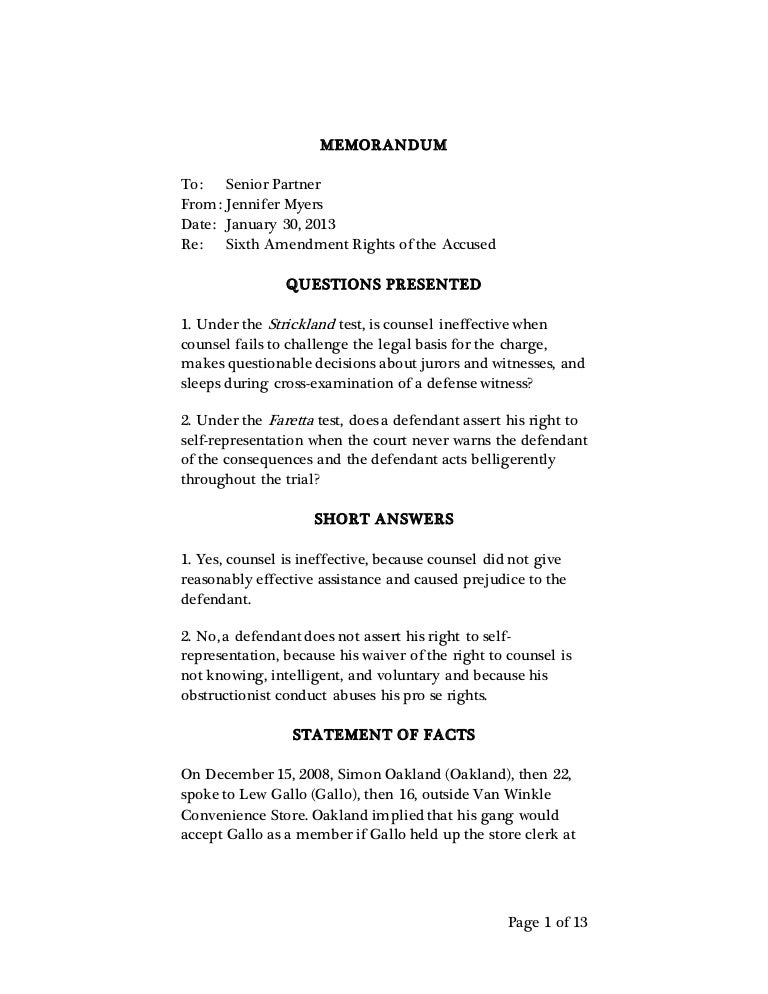Fine Beautiful Tips About How To Write A Case Memorandum
%2C_Former_Lebanese_President_Charles_Helou_-_May_4%2C_1976(Gerald_Ford_Library)(1553447).pdf/page1-1200px-Scowcroft%2C_Joseph_Sisco_(State)%2C_Former_Lebanese_President_Charles_Helou_-_May_4%2C_1976(Gerald_Ford_Library)(1553447).pdf.jpg)
These documents can be used in different.
How to write a case memorandum. Use lexisnexis ® case summaries and lexisnexis headnotes* to quickly gain an understanding of the facts and issues in the case. Curmudgeon welcome to the firm. Step 1 insert the heading that is appropriate for the court.
N clearly and succinctly state the issues; In the form of a question. Every court has different rules regarding how the heading should be structured, though all require the names of the two.
Provide background on the issue outline action items and timeline. N proofread the entire paper several times—no errors in. To work at this firm, you must know how to write.
This guide provides an example of how to write a closed memo for a law school research assignment. Continue building your skills with research certifications. Writing memoranda in your first.
When to write a memo. A memorandum from a curmudgeon to: It also provides tips for.
A memo writer, however, is clear about the strengths and. How to write a legal memorandum. How to write a memo write a heading.
How to write a memo in five steps regardless of the type, memos should be concise, clear, courteous, and coherent. Facts relevant to the legal issue. In discussing the case law, you must include the facts of the precedential cases and the court’s holding, and state how the holding affects the facts of your case.
This part identifies what a bench memorandum is and how the judge will use such a document. Discusses how to properly draft a bench memorandum. Memos should also follow a standard format.
Memoranda are used as internal documents for an attorney to assess how a legal rule will likely be applied to a given set of facts. A memo writer can then use the outcome of that research to present his client’s case most favorably. How to write a brief or memo to write a persuasive brief or an effective memo:
There are several components that. Depending on the nature of your case, you may also wish to include a paragraph discussing particularly relevant precedent in order to establish how the rule works in practice. Legal memorandums form the basis of communications in the attorney profession.

















